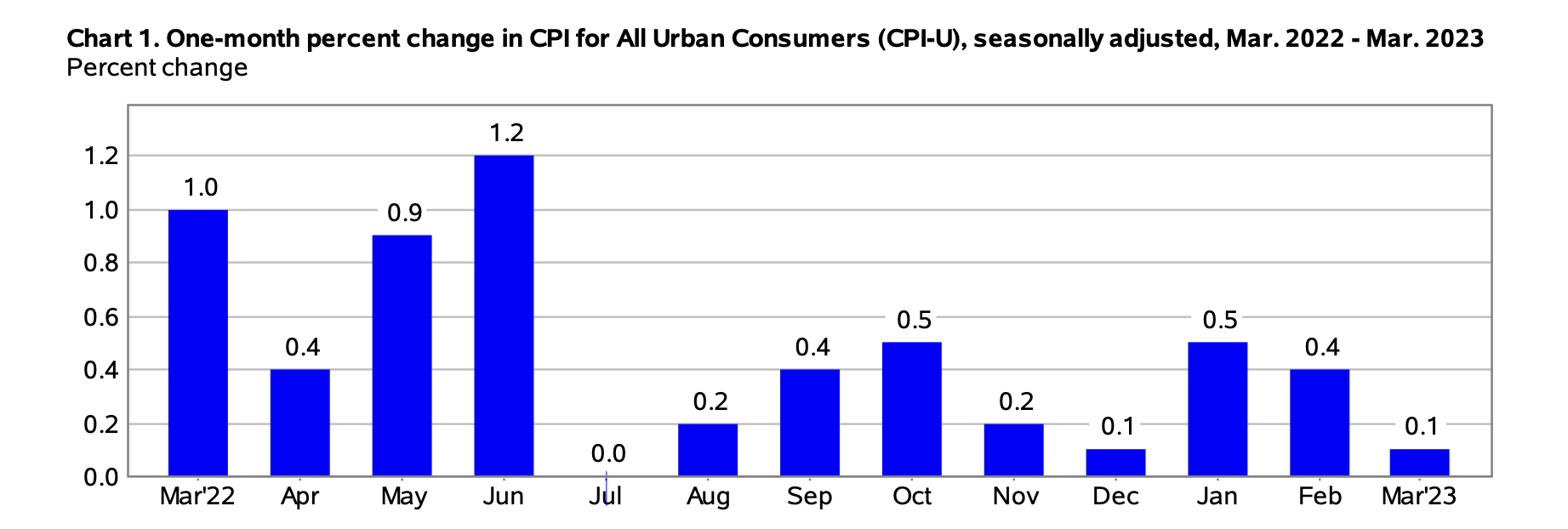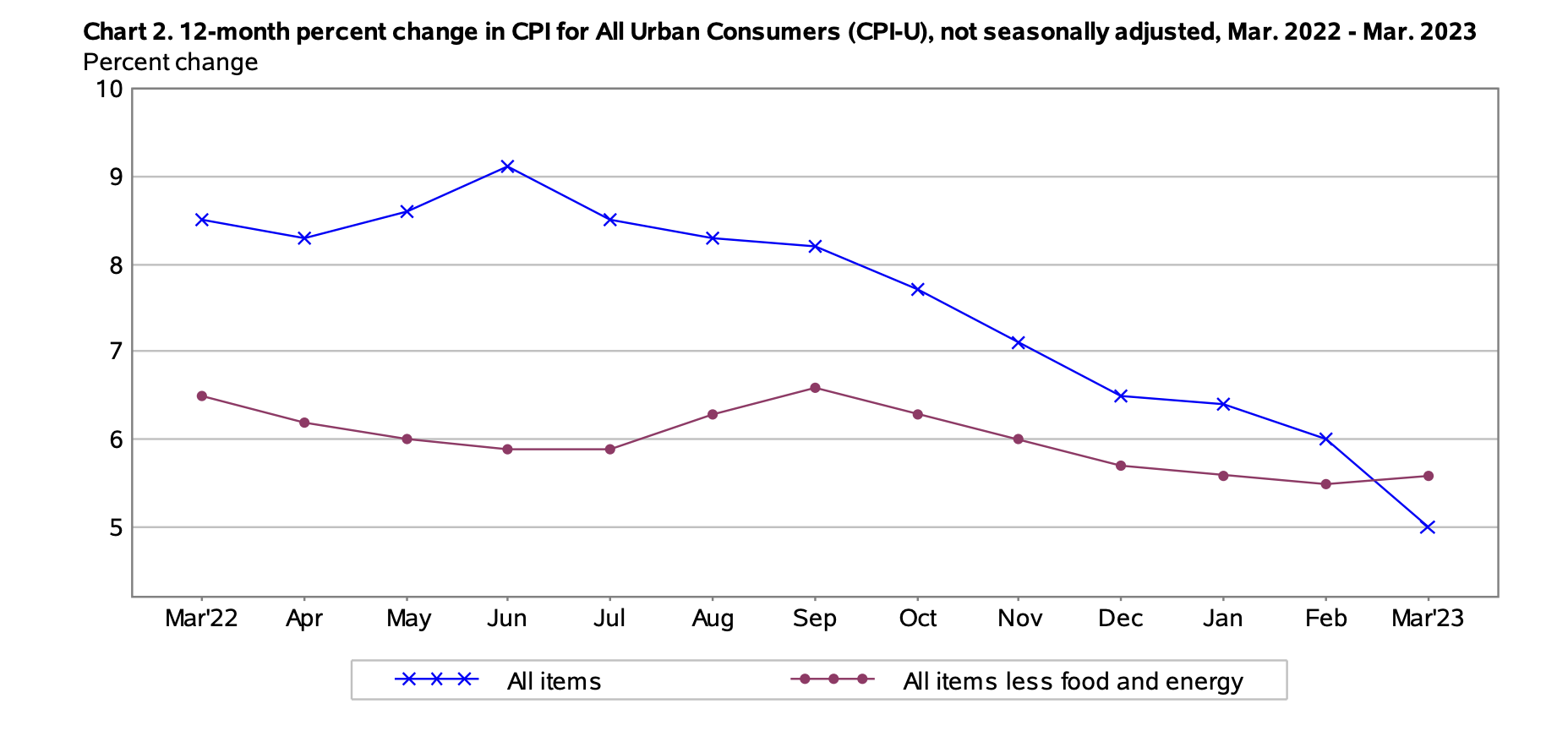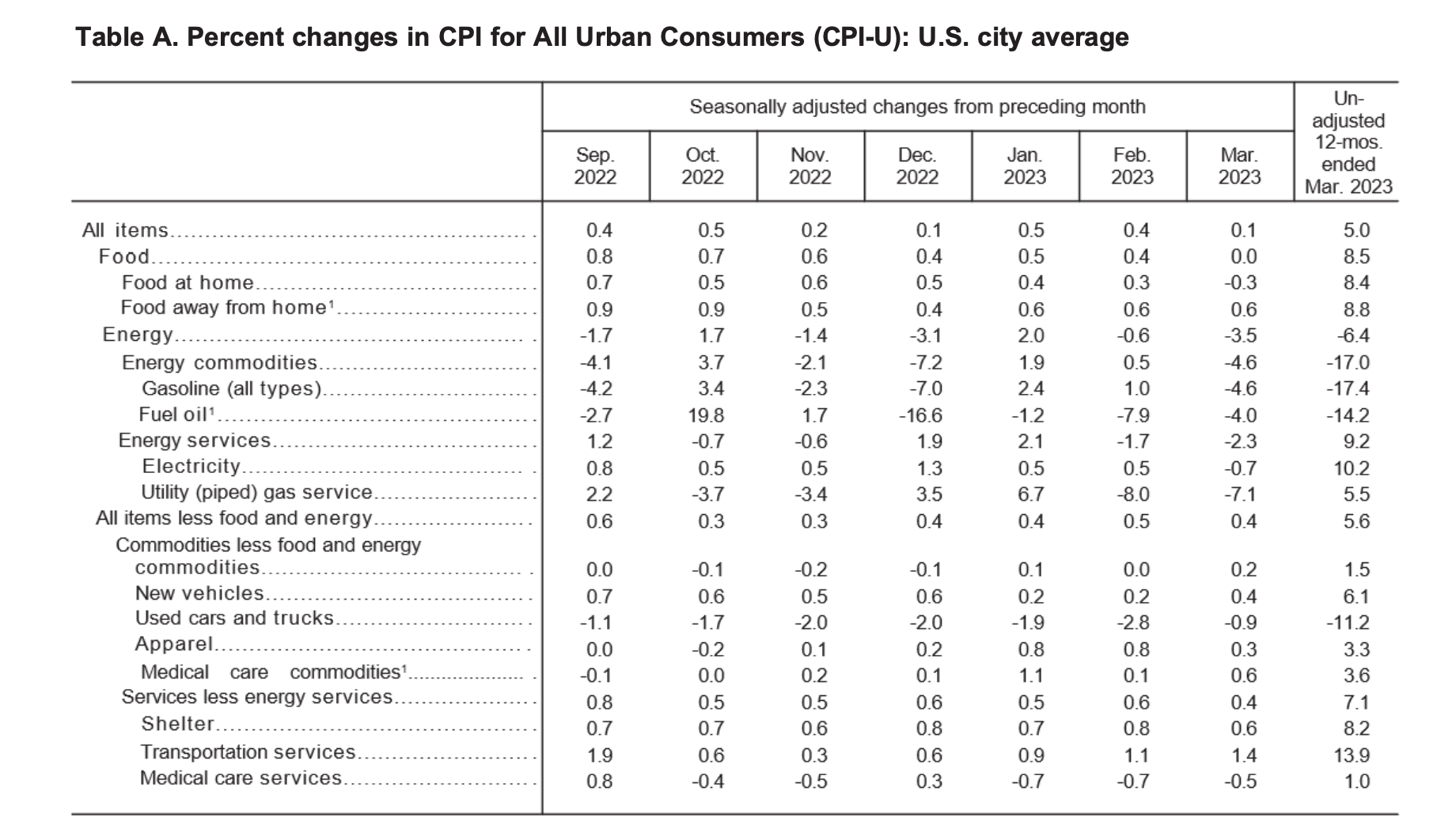The Consumer Price Index for All Urban Consumers (CPI-U) increased by 0.1% on a seasonally adjusted basis, per the Bureau of Labor Statistics. Year-over-year, before seasonal adjustment the all-items index grew by 5.0%, which is down from 6.0% in February.
March’s CPI data is in step with a continuing trend of inflation deceleration that has been ongoing all year after peaking at 9.1% in June of last year. According to a Yahoo Finance report, consumer prices in March came in less than expected, which was around 5.2%.
In short, the March 2023 CPI-U data indicates a cool-off is still underway, with deceleration trending toward the Fed’s target rate of 2.0% by next year.
Shelter costs were the major driving force in March’s inflation figure. Although the energy index declined in March and the food index remained unchanged from last month, the index for all items less food and energy rose 0.4%. Overall, the March 2023 CPI increase (5.0%) constituted the smallest year-over-year (Y-o-Y) increase since May 2021.
Source: Bureau of Labor Statistics
As indicated in “Table A” below, energy prices, including gasoline, as well as used cars and trucks put significant downward price pressure on the CPI in the month of March. Meanwhile, food at home (8.5%), food away from home (8.8%), and transportation services (13.9%) asserted a lot of upward pressure that more than offset the price reductions in the energy sector.
Most significant is the drop in energy prices which, compared to February 2023, saw dramatic price drops. This can largely be attributed to the major price increases in oil and gas following the Russian invasion of Ukraine in March of last year.
Largest Y-o-Y Drop Since May 2021
The most important story in the March 2023 CPI report is that inflation is dramatically cooling off from its mid-2022 high point. In fact, this month saw the smallest Y-o-Y increase in the CPI-U since May 2021. This appears to indicate that the Federal Reserve’s hawkish interest rate policy appears to be working as intended, and that future rate hikes are likely to continue (albeit at a slower pace) until the target 2% inflation benchmark is reached.

Core CPI Still Cause for Concern
Overall, the core CPI (CPI-U less food and energy) is still hot, coming in at 0.4% after a 0.5% increase in February. This is due primarily to rent increases and increases in the homeowners’ equivalent rent indices increasing by 0.5% in March. Therefore, policymakers are likely to target rent and housing affordability concerns through legislative efforts in order to mitigate the negative effects of housing costs on the CPI.
Ready to Protect Your Retirement Savings?
While inflation appears to be cooling, high interest rates and cost-of-living increases are taking a toll on the average American family. With inflation still far above the Fed’s target benchmark, investors are losing more and more of their savings every year due to the depreciation of the U.S. dollar.
Want to learn more about how inflation is impacting American households? Check out our exclusive calculator widget, and don’t forget to subscribe to our monthly newsletter if you haven’t already—this way, you can stay informed of the latest CPI developments immediately after they’re released.
Source Cited: https://www.bls.gov/news.release/pdf/cpi.pdf





